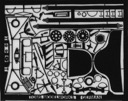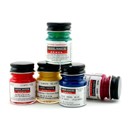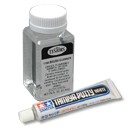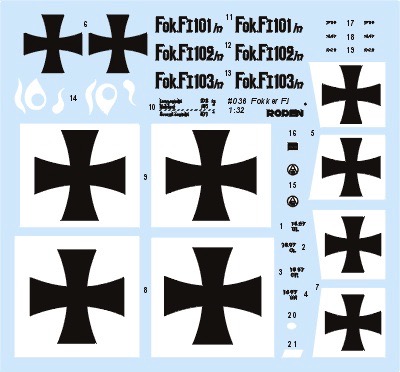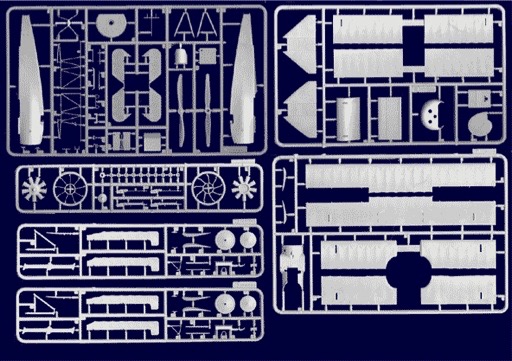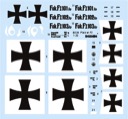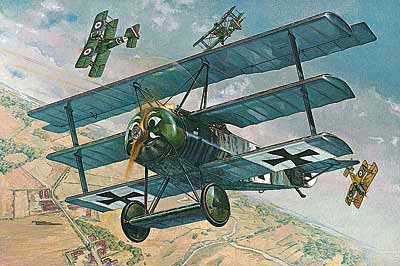

Fokker F.1
Unassembled plastic model kit
Other products to consider
Don't forget building supplies!
In Stock (Ships in 1-3 business days)List price: $69.99
You pay: $49.49
(All prices in U.S. Dollars)

Manufacturer: Roden
Stock Number: ROD 605
Scale: 1/32
View all products of type "Fokker Dr.1"
You pay: $49.49
(All prices in U.S. Dollars)


Manufacturer: Roden
Stock Number: ROD 605
Scale: 1/32
View all products of type "Fokker Dr.1"
This model kit requires assembly. Cement, paint and other construction materials not included unless specifically stated in the description.
The story of the most famous plane of the First World War, the Fokker Dr.1, outstanding creation of the famous and talented Dutch designer Antony Fokker, would be incomplete without the story of its pre-production model, the Fokker F.I. Although only three were built, it left an indelible trace in the history of air fighting in the Great War.
Hugely impressed by the capabilities of the new British Sopwith Triplane, Antony Fokker decided to create a similar plane at all cost with even better performance. Having taken as a basis the British design, without any doubt it is possible to consider the plane Fokker produced as one of the best created at that time. After successful testing of the V.4 prototype, the authorities issued an order for 20 planes, the first three receiving the individual numbers F.I 101/17, F.I 102/17, F.I 103/17. 101/17 was retained at the factory for full-scale tests (it was lost on August 11th, 1917), and the other two were delivered to the Front for assessment under fighting conditions. In general, new planes were tried out with the best aces. The most elite unit was Jagdgeschwader Nr. I (The 'Flying Circus'), commanded by the renowned ace Manfred von Richtofen, and which included a particular unit, Jasta10, led by Werner Voss. They received the two new triplanes. Straightaway, on August 28th, Voss carried out his first test flight.
September 1st, 1917 saw the fighting debut of the Fokker F.1. Von Richtofen and Voss under the cover of other pilots of the 'Flying Circus' proceeded on air patrol above the front line in the Zonnebeke area and soon intercepted a single British R.E.8 two seater. Von Richtofen destroyed it without any problem. The British pilots had had no idea that there existed any such machine except for the Sopwith Triplane, and had not shown any resistance. So began this excellent German triplane's combat victories. On the 3rd September von Richtofen shot down a Sopwith Pup, but after that was compelled to leave the Front until October 23rd. So Triplane 102/17 was passed on to Kurt von Doring, then it was tested by Hans Adam, and on September 11th it gained a new pilot, Kurt Wolff. However, on September 15th in a severe skirmish with the pilots of 10 Squadron Royal Naval Air Service it was lost.
The other machine, 103/17, which was received by Werner Voss, was successfully used by him for less than a month. On the morning of September 23rd Voss achieved his 48th victory (on September 11th he had managed to shoot three enemy planes in the same fight!) and he also hoped during the same day to notch up at least two more planes, however this ambition was not allowed to be carried out. In the afternoon he took off on patrol and came up against some British S.E.5a's from 56 Squadron. This was the elite squadron of the Royal Flying Corps and included some of the most successful and most skilled pilots. Voss did not hesitate; he had met a formidable enemy, but he courageously accepted the fight - one against seven. Voss was up against James McCudden, Arthur Rhys Davids and Richard Mayberry, aces of aces for the British Empire.
This legendary fight has become part of the history of the First World War, as a remarkable display of heroism and selflessness. James McCudden reported that at one point he watched five S.E.5a's simultaneously shoot tracers at Voss's plane. It was the very definition of a dogfight, planes flying around one another at distances of a few meters, but a happy outcome was not to befall the Germans on this day. Clearly Voss's was badly wounded - his plane lost control and started to plummet to the ground, its propeller stopped. The end for the triplane in this vicious and bloody struggle was delivered by Arthur Rhys Davids - he came onto the tail of the German and shot it with his last remaining rounds. The plane fell near Plum Farm, north of Frezenburg, and there the brave German ace came to his final rest.
The loss of two leading aces - Voss and Wolff - during one week had not been fatal to the fighting career of Fokker's triplane. The doubts disappeared when the details of Voss's epic fight with the English became known. The military issued Fokker with an order for 300 triplanes under the designation Dr.I, and soon this small three winged machine would become historic as the plane flown by the most famous German aces and, thanks to the Red Baron, one of the symbols of the First World War.
Hugely impressed by the capabilities of the new British Sopwith Triplane, Antony Fokker decided to create a similar plane at all cost with even better performance. Having taken as a basis the British design, without any doubt it is possible to consider the plane Fokker produced as one of the best created at that time. After successful testing of the V.4 prototype, the authorities issued an order for 20 planes, the first three receiving the individual numbers F.I 101/17, F.I 102/17, F.I 103/17. 101/17 was retained at the factory for full-scale tests (it was lost on August 11th, 1917), and the other two were delivered to the Front for assessment under fighting conditions. In general, new planes were tried out with the best aces. The most elite unit was Jagdgeschwader Nr. I (The 'Flying Circus'), commanded by the renowned ace Manfred von Richtofen, and which included a particular unit, Jasta10, led by Werner Voss. They received the two new triplanes. Straightaway, on August 28th, Voss carried out his first test flight.
September 1st, 1917 saw the fighting debut of the Fokker F.1. Von Richtofen and Voss under the cover of other pilots of the 'Flying Circus' proceeded on air patrol above the front line in the Zonnebeke area and soon intercepted a single British R.E.8 two seater. Von Richtofen destroyed it without any problem. The British pilots had had no idea that there existed any such machine except for the Sopwith Triplane, and had not shown any resistance. So began this excellent German triplane's combat victories. On the 3rd September von Richtofen shot down a Sopwith Pup, but after that was compelled to leave the Front until October 23rd. So Triplane 102/17 was passed on to Kurt von Doring, then it was tested by Hans Adam, and on September 11th it gained a new pilot, Kurt Wolff. However, on September 15th in a severe skirmish with the pilots of 10 Squadron Royal Naval Air Service it was lost.
The other machine, 103/17, which was received by Werner Voss, was successfully used by him for less than a month. On the morning of September 23rd Voss achieved his 48th victory (on September 11th he had managed to shoot three enemy planes in the same fight!) and he also hoped during the same day to notch up at least two more planes, however this ambition was not allowed to be carried out. In the afternoon he took off on patrol and came up against some British S.E.5a's from 56 Squadron. This was the elite squadron of the Royal Flying Corps and included some of the most successful and most skilled pilots. Voss did not hesitate; he had met a formidable enemy, but he courageously accepted the fight - one against seven. Voss was up against James McCudden, Arthur Rhys Davids and Richard Mayberry, aces of aces for the British Empire.
This legendary fight has become part of the history of the First World War, as a remarkable display of heroism and selflessness. James McCudden reported that at one point he watched five S.E.5a's simultaneously shoot tracers at Voss's plane. It was the very definition of a dogfight, planes flying around one another at distances of a few meters, but a happy outcome was not to befall the Germans on this day. Clearly Voss's was badly wounded - his plane lost control and started to plummet to the ground, its propeller stopped. The end for the triplane in this vicious and bloody struggle was delivered by Arthur Rhys Davids - he came onto the tail of the German and shot it with his last remaining rounds. The plane fell near Plum Farm, north of Frezenburg, and there the brave German ace came to his final rest.
The loss of two leading aces - Voss and Wolff - during one week had not been fatal to the fighting career of Fokker's triplane. The doubts disappeared when the details of Voss's epic fight with the English became known. The military issued Fokker with an order for 300 triplanes under the designation Dr.I, and soon this small three winged machine would become historic as the plane flown by the most famous German aces and, thanks to the Red Baron, one of the symbols of the First World War.

Copyright © 2005-2024 Scale Hobbyist, all rights reserved


















